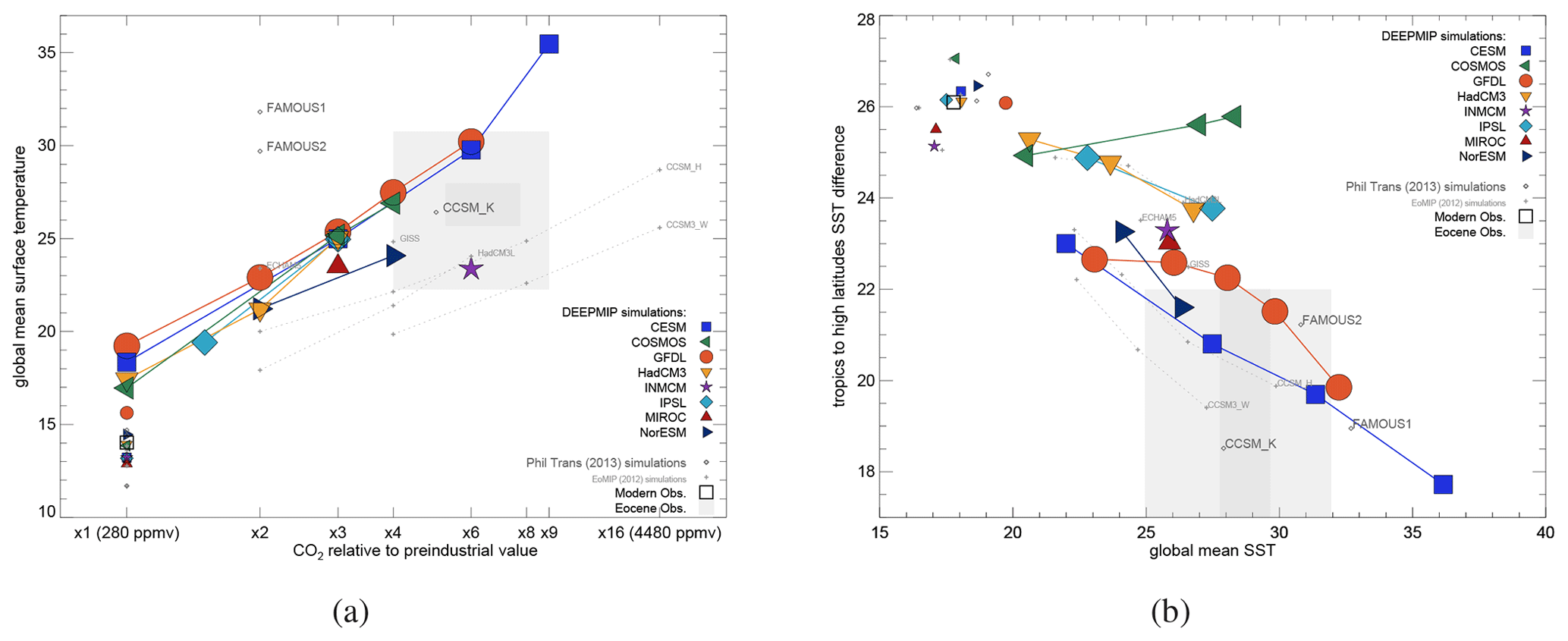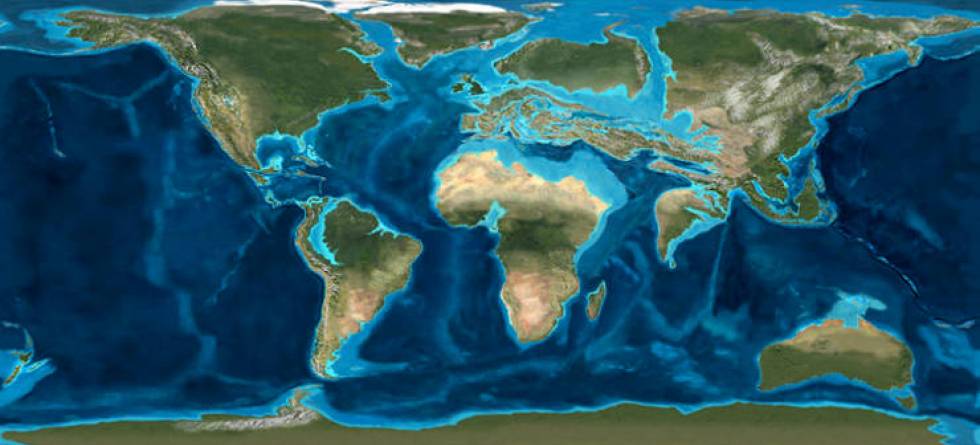Written by Petra Langebroek, researcher at the Bjerknes Centre and NORCE
A million-dollar question in climate sciences is: how well can climate models simulate future warm climates? Climate models, nowadays called Earth System Models, are numerical machines calculating hundreds of mathematical equations that describe the physical processes of our climate.
These models are tested and benchmarked by observations and other data, but unfortunately future climate scenarios are beyond any climate conditions of our recent past, and data is therefore limited.
In an attempt to test our models on a really warm period, the DeepMIP project gathered scientists interested in understanding the deep past period of the early Eocene climate optimum (EECO), about 50 million years ago. The world looked quite different at that time: there were was no ice on Greenland and Antarctica, there was a sea passage around the equator, and our beloved Nordic Seas did not exist yet, as Europe and Greenland were only separated by a narrow shallow sea.
Global mean temperatures were around 5-15 °C warmer than today, in large part due to the much higher carbon dioxide (CO2) concentration of 1100–2500 parts per million. Due to the overall warmer climate, and the lack of snow and ice, the poles warmed more than the tropical regions, causing a lower tropics-to-high latitudes gradient.
Our Norwegian Earth System Model (NorESM) was one of the models that took part in the DeepMIP initiative, and the figure shows how well it performs compared to the other well-established Earth System Models. In the figure the gray shaded boxes indicate conditions as interpreted from deep-sea sediment record data. The NorESM results are shown by dark blue triangles.

Indeed, our simulation forced by CO2 concentrations of 1120 parts per million – four times the pre-industrial value – reaches the conditions proposed by data. Furthermore, it follows an expected trend of smaller tropics-to-high latitudes temperature gradient for higher CO2 forcing.
There is certainly room for improvement and further testing is needed, but for now these results indicate that NorESM might be a good model for simulating warm past and future climates.
In our newly funded Research Council of Norway project DOTpaleo, led by Nele Meckler from the Bjerknes Centre and the University of Bergen, we will look further into these deep warm climates with both modelling and proxy data reconstructions.
Reference
Lunt, D. J., Bragg, F., Chan, W.-L., Hutchinson, D. K., Ladant, J.-B., Morozova, P., Niezgodzki, I., Steinig, S., Zhang, Z., Zhu, J., Abe-Ouchi, A., Anagnostou, E., de Boer, A. M., Coxall, H. K., Donnadieu, Y., Foster, G., Inglis, G. N., Knorr, G., Langebroek, P. M., Lear, C. H., Lohmann, G., Poulsen, C. J., Sepulchre, P., Tierney, J. E., Valdes, P. J., Volodin, E. M., Dunkley Jones, T., Hollis, C. J., Huber, M., and Otto-Bliesner, B. L.: DeepMIP: model intercomparison of early Eocene climatic optimum (EECO) large-scale climate features and comparison with proxy data, Clim. Past, 17, 203–227, https://doi.org/10.5194/cp-17-203-2021, 2021.

